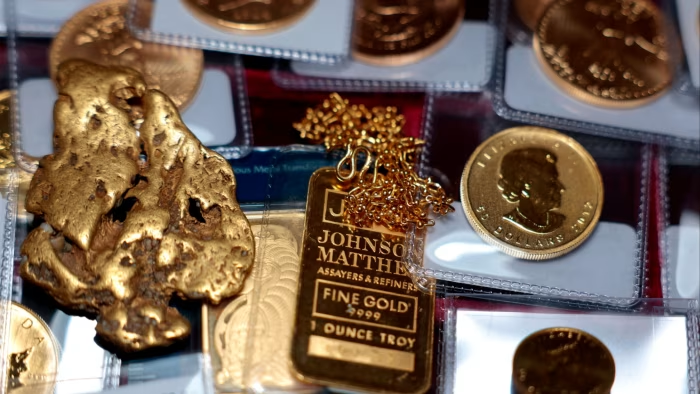Unlock the Editor’s Digest for free
Roula Khalaf, Editor of the FT, selects her favourite stories in this weekly newsletter.
Gold has climbed above $4,000 a troy ounce for the first time, capping a dizzying rally as investors worried about inflation and soaring debt levels pile into the precious metal.
Gold hit $4,019 early on Wednesday, extending a rally that has sent prices up more than 50 per cent this year. The historic gains have been driven by central banks buying bullion to diversify away from the dollar, as well as by investors who see gold as a hedge against uncertainty.
Hedge fund billionaire Ray Dalio said on Tuesday gold was a safer alternative to the dollar, calling it an “excellent diversifier” for portfolios.
“When you have such a supply of debt . . . it’s natural to go to an alternative storehold of wealth, which is why we’re going to harder currencies,” Dalio said in a conference in Greenwich. “Gold is the most fundamental of those.”
Other key milestones in the gold price have come at time of chaos or uncertainty: it passed $1,000 during the financial crisis, and $2,000 during the Covid-19 pandemic, while the $3,000 threshold was passed in March, just ahead of Donald Trump’s “liberation day” tariffs that sent financial markets into a tailspin.
The unrelenting upswing in recent weeks — bullion has surged 20 per cent in less than two months, largely driven by inflows in gold-backed exchange traded funds — has caught the market by surprise. The US government shutdown, now entering its second week, has also spurred the rally.
“It really is an extraordinary moment,” said Ross Norman, a veteran bullion trader who founded Fastmarkets and Metals Daily, adding that he was worried by the “parabolic nature of the move, without a pause for breath”.
Record purchases by central banks, which have been buying to diversify their holdings away from the US dollar, have been a key driver of the longer term trend. Central banks have bought around 1,000 tonnes of gold annually for the past three years.
Recommended
“We’ve seen how price insensitive central bank buying has been,” said Michael Haigh, head of commodities research at Société Générale. “There’s nothing magical about the number $4,000 — the path continues northward.”
The US government shutdown has added to the uncertainty by halting publication of Commodity Futures Trading Commission data that show how speculative investors are positioned in gold and other commodities.
Helen Amos, commodities analyst at BMO, said that the rally is “a way of people expressing their concerns about government debt, and about the independence of the Federal Reserve”.
Goldman Sachs on Tuesday raised its target price to $4,900 per troy ounce, from $4,300, citing central bank buying and ETF inflows.
Additional reporting by William Sandlund in Hong Kong

